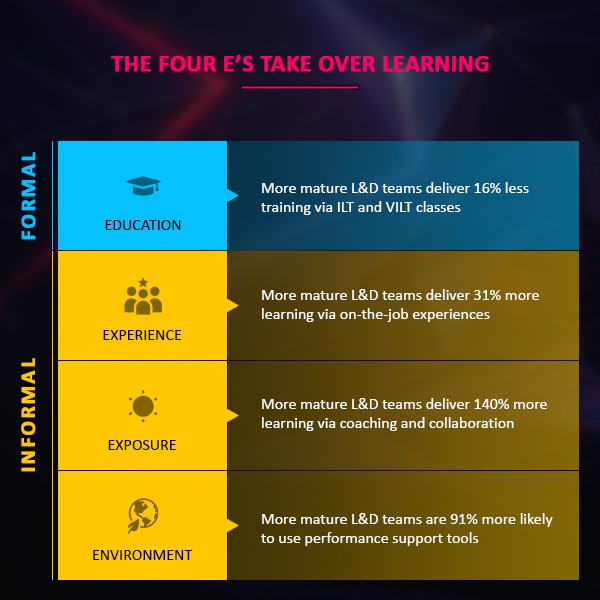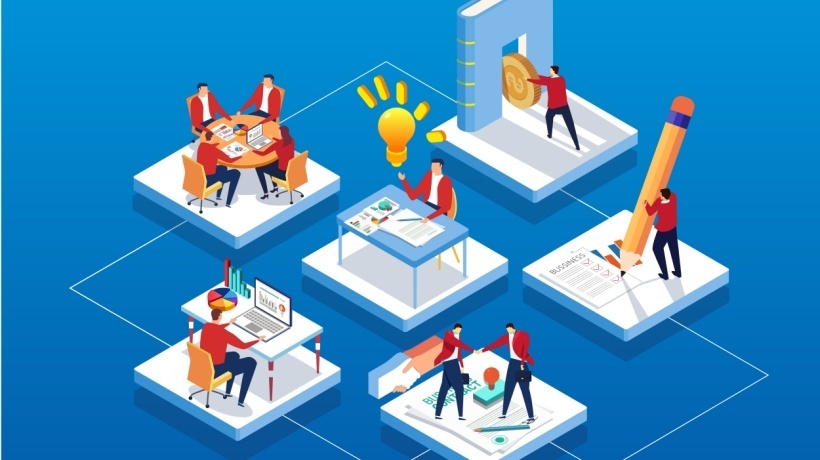Blend Learning As A Part Of The Daily Workflow
Today, corporate training is all about "out of the training room and into the flow of work." Organizations are working toward changing their approaches in delivering learning and reshaping their learning models to deliver meaningful content, which is accessible as Just-In-Time training to support employee development.
In this article, I will help you determine how organizations can blend learning as a part of the daily workflow.
What Is Learning In The Flow Of Work?
The phrase “learning in the flow of work” was coined by Josh Bersin, a corporate HR and learning analyst in the USA. It refers to easily accessible and engaging nuggets of learning during work, which will maximize productivity, reduce burnout, and improve employee morale.
Josh Bersin describes it as the “new paradigm for corporate training” because learning is embedded in work. Learning in the flow of work acknowledges that learning should fit into the work-life of an employee. The solutions that help to learn in the flow of work mainly focus on learning opportunities throughout the employee’s working day.
How Can Organizations Support Learning In The Flow Of Work?
Bersin states that the "flow of work" approach should follow 4 E’s (Figure 1), which will encourage learning without overwhelming them with learning approaches.
 Figure 1: The 4E’s in Learning in the Flow of Work
Figure 1: The 4E’s in Learning in the Flow of Work
The 4 E's
- Education
This refers to the learning delivered through Instructor-Led Training (ILT) and Virtual Instructor-Led Training (VILT) programs. - Experience
This is the learning that an employee gains via on-the-job experience. For example, checklists, job rotation, cross-training, etc. - Exposure
This is the learning delivered through coaching and collaboration with others. For example, peer feedback, 360-degree feedback, etc. - Environment
This refers to the tools, systems, and other performance support tools. For example, eLearning, mobile learning apps, books, etc.
The 4 E’s offer a more structured approach to learning, providing employees with learning support, which will help improve performance. Selecting the right delivery method among the above will provide the employee with the right tool to perform the job better.
How Can Organizations Use The Flow Of Work?
Organizations can take the following steps to make use of the flow of work to develop the skills of their employees.
- Use curated content and make it easy to use
Employees will always rely on Google or YouTube as the first step for information and answers. Yet an organization needs to ensure that systems within the organization have content that is curated and easily and quickly accessible. - Use tools and technology
Use the latest technology and tools to create a learning opportunity during work. For example, if an employee is unsure of the steps to perform a task, then including a QR code, which will give more details when the employee scans it, makes a direct connection between learning and work. - Create an online space for learning
Create an online space in the company server or LMS for learning where employees can make their contribution. Encourage everyone from business leaders to managers to contribute and promote the content. - Use a chatbot
An intelligent chatbot can help the learner understand difficult concepts on the job. This is an effective and useful way to combine learning with work. - Use personalized emails
Emails are not obsolete. Email may not be the most popular method, but it is still an effective way to deliver learning. Personalized emails (without overcrowding the inbox) can be an efficient and effective way to send learning across the employees in an organization.
Conclusion
More and more organizations are trying to embed learning in the flow of work. They are using different technologies and tools, such as microlearning, APIs, and traditional methods like ILTs and VILTs, and identifying the right methodology to deliver learning without interrupting the daily work. These practices will help improve performance and productivity by helping employees perform better at their jobs, while they are learning from them.
At Tesseract Learning, our learning and visual architects are constantly innovating and reinventing their approaches to design, develop, and deliver effective L&D programs. If you have any specific queries, do contact me or leave a comment below.








